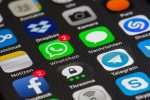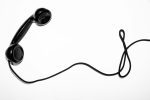Communication Social Studies Primary 5 Second Term Lesson Notes Week 9
Lesson Note for Primary 5 Social Studies
Subject: Social Studies
Class: Primary 5
Term: Second Term
Week: Week 9
Topic: Communication
Lesson Details
Sub-topic: Understanding the Process of Communication
Duration: 45 minutes
Behavioural Objectives
By the end of this lesson, students should be able to:
- Explain the meaning of communication.
- Identify different means of communication.
- Recognize the importance of effective communication.
- List examples of olden days and modern communication tools.
- Understand the role of feedback in communication.
Key Words
- Communication
- Feedback
- Medium
- Olden Days
- Modern Days
Entry Behaviour
Students are familiar with the concept of exchanging information and ideas from everyday interactions.
Learning Resources and Materials
- Lagos State Scheme of Work for Social Studies
- Wall charts illustrating various communication tools
- Pictures depicting olden days and modern communication methods
- Online resources
Building Background/Connection to Prior Knowledge
- Review prior lessons where students exchanged information.
- Relate the lesson to everyday experiences like phone calls, texting, or face-to-face conversations.
Embedded Core Skills
- Critical Thinking: Analyzing the effectiveness of communication tools.
- Communication Skills: Expressing ideas during discussions.
- Observation: Identifying communication tools and their uses.
Instructional Materials
- Wall charts with examples of communication tools.
- Pictures or slideshows showing olden and modern communication tools.
- Short videos demonstrating communication methods.

Content
What is Communication?
Communication is the process of exchanging information, ideas, or thoughts between individuals or groups. Effective communication requires feedback to confirm understanding.
Media of Communication
Olden Days:
- Fire signals
- Town crier
- Letter writing
- Special items like snail shells and white clothes
Modern Days:
- Television
- Radio
- Internet
- Mobile phones
- Social media platforms (e.g., Facebook, WhatsApp, Zoom)
Characteristics of Effective Communication
- Clear and understandable message.
- Timely delivery of information.
- Active listening and feedback.
Barriers to Communication
- Fear
- Obsolete gadgets
- Climatic conditions
- Misunderstandings
Evaluation Questions
Fill-in-the-Blank Questions
- Communication is the process of exchanging __________.
a) gifts
b) information
c) laughter
d) music
Answer: b) information - In the olden days, __________ were used to share news in communities.
a) telephones
b) town criers
c) televisions
d) computers
Answer: b) town criers - Effective communication requires __________ feedback.
a) negative
b) effective
c) random
d) delayed
Answer: b) effective - __________ are examples of modern communication tools.
a) Smoke signals
b) Letters
c) Mobile phones
d) Snail shells
Answer: c) Mobile phones - Communication becomes ineffective when there is no __________.
a) message
b) feedback
c) medium
d) understanding
Answer: b) feedback
Theory Questions
- What is communication?
- List three modern communication tools.
- Why is feedback important in communication?
- Compare communication in olden days and modern times.
- What are barriers to effective communication?
Presentation Steps
Introduction (5 minutes)
- Greet students and review the previous lesson.
- Introduce the topic, “Communication,” with examples.
- Discuss communication in students’ daily lives.
Main Lesson (20 minutes)
- Define communication and explain its purpose.
- Discuss different means of communication (verbal, written, visual).
- Show examples of olden and modern communication tools.
- Explain the importance of feedback in communication.
Activity and Discussion (15 minutes)
- Role-play scenarios demonstrating effective communication.
- Group discussion on barriers to communication.
- Analyze the role of technology in improving communication.
Assessment
- Evaluate participation in activities and discussions.
- Use oral questioning to check understanding.
- Review students’ worksheet responses.
Conclusion
- Summarize the importance of effective communication.
- Review key points from the lesson.
- Assign research tasks on communication evolution for homework.
SEO Information for Lesson Post
Captivating Title: Understanding the Process of Communication for Primary 5 Students
Focus Keyphrase: Communication for Primary 5
SEO Title: Communication Process for Primary 5 | Lesson Note & Activities
Slug: communication-process-primary-5
Meta Description: Discover a comprehensive lesson note on communication for Primary 5 students. Learn the meaning, tools, and importance of effective communication with activities.


